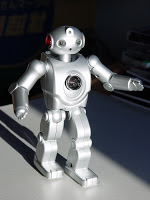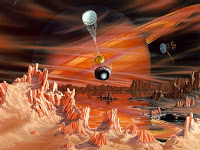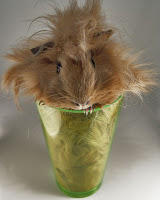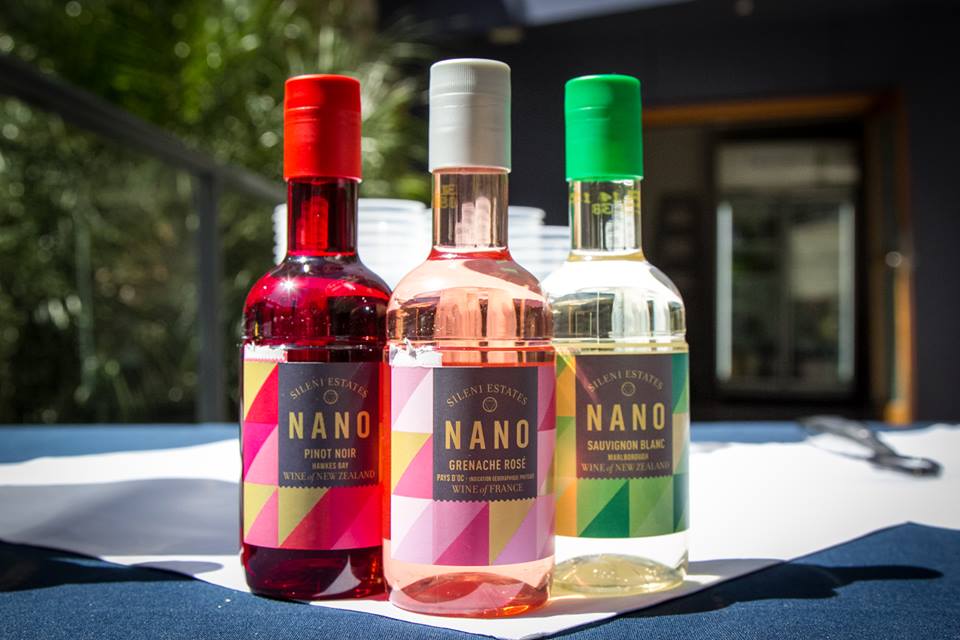 Have you ever wanted to turn water into wine? Believe it or not the technology is available to do so. It sounds like something from Star Trek but Nanotechnology is at our doorstep. Nanotechnology is the precision engineering of substances at molecular and atomic level. The Observer and The Guardian (http://www.observer.guardian.co.uk/) have recently reported on this futuristic development in the world of science. It will enable us to decide how much caffeine we want to take out of our coffee, to turn red wine into white and to make milk that tells you when it has gone off.“The processed-food giant Kraft and a group of research laboratories are busy working towards ‘programmable food’. One product they are working on is a colourless, tasteless drink that you, the consumer, will design after you’ve
Have you ever wanted to turn water into wine? Believe it or not the technology is available to do so. It sounds like something from Star Trek but Nanotechnology is at our doorstep. Nanotechnology is the precision engineering of substances at molecular and atomic level. The Observer and The Guardian (http://www.observer.guardian.co.uk/) have recently reported on this futuristic development in the world of science. It will enable us to decide how much caffeine we want to take out of our coffee, to turn red wine into white and to make milk that tells you when it has gone off.“The processed-food giant Kraft and a group of research laboratories are busy working towards ‘programmable food’. One product they are working on is a colourless, tasteless drink that you, the consumer, will design after you’ve  bought it. You’ll decide what colour and flavour you’d like the drink to be, and what nutrients it will have in it, once you get home. You’ll zap the product with a correctly-tuned microwave transmitter – presumably Kraft will sell you that, too.
bought it. You’ll decide what colour and flavour you’d like the drink to be, and what nutrients it will have in it, once you get home. You’ll zap the product with a correctly-tuned microwave transmitter – presumably Kraft will sell you that, too.
This will activate nano-capsules – each one about 2,000 times smaller than the width of a hair – containing the necessary chemicals for your choice of drink: green-hued, blackcurrant-flavoured with a touch of caffeine and omega-3 oil, say. They will dissolve while all the other possible  ingredien ts will pass unused through your body, in their nano-capsules.”
ingredien ts will pass unused through your body, in their nano-capsules.”
It sounds incredible but in the future you could literally wave your magic wand and change the alcoholic content of your wine, remove cork taint, or zap vin de table into a vintage. Trouble is, despite what it tasted or looked like, you would still know what it was originally. It isn’t quite the same is it?
“By using micro biochemistry and nanotechnology, chefs will one day be able to pin down tastes, textures and colours and deliver them
to order. They will be able to design dishes at molecular level and build the food that you receive on your plate.”
 Every major food corporation is investing in nano-tech – Unilever, Cadbury Schweppes, Tate & Lyle, Numico (the baby foods giant that owns the brands Milupa and Cow & Gate) and Glaxo-SmithKline were all spotted at a conference in Amsterdam to discuss nano-technology, food and health. Government in Europe has pumped £1.7 billion in research money into the field over the past eight years. The business will be worth $20 billion annually b
Every major food corporation is investing in nano-tech – Unilever, Cadbury Schweppes, Tate & Lyle, Numico (the baby foods giant that owns the brands Milupa and Cow & Gate) and Glaxo-SmithKline were all spotted at a conference in Amsterdam to discuss nano-technology, food and health. Government in Europe has pumped £1.7 billion in research money into the field over the past eight years. The business will be worth $20 billion annually b
Apparently we are already using it in clothing, electronics, manufacturing and increasingly in health and  cosmetics. If you buy a clear sunscreen that promises it blocks ultraviolet light, it is using nano-particles of metals like zinc or titanium – it’s clear because the particles are too small to affect ordinary light. L’Oreal (backed by the food company Nestlé) is marketing anti-ageing cosmetics that exploit the tininess of the particles, ‘nanosomes’, and their ability to penetrate deep into skin cells. The Woodrow Wilson Centre, a Washington research institute, runs a database of nano-tech products that are commercially available, and the list under Food and Beverage is only 29 products long, compared with 201 under Health and Fitness. The list has grown 50% since last March, when it was only 19 products long.
cosmetics. If you buy a clear sunscreen that promises it blocks ultraviolet light, it is using nano-particles of metals like zinc or titanium – it’s clear because the particles are too small to affect ordinary light. L’Oreal (backed by the food company Nestlé) is marketing anti-ageing cosmetics that exploit the tininess of the particles, ‘nanosomes’, and their ability to penetrate deep into skin cells. The Woodrow Wilson Centre, a Washington research institute, runs a database of nano-tech products that are commercially available, and the list under Food and Beverage is only 29 products long, compared with 201 under Health and Fitness. The list has grown 50% since last March, when it was only 19 products long.
Samsung has fridges on the market in Asia and America that use nano-silver to kill bacteria. In lab experiments, the colour has been removed from beetroot juice, leaving the flavour; and red wine turned into white.  Lactose can now be filtered from milk, and replaced with another sugar – making all milk suitable for the lactose-intolerant.
Lactose can now be filtered from milk, and replaced with another sugar – making all milk suitable for the lactose-intolerant.
Parents are a big market for nano, obviously. Nano-encapsulation means no more bribing your kids to eat fruit and oily fish: vitamin C-enriched cooking oil and omega-3 fish oil-carrying juices are already available. In Australia, you can buy Tip Top bread which contains undetectable nano-capsules of omega-3.
The food industry is excited about sell-by dates and self-preserving food. Nano-coatings will make the life span of manufactured food even longer. Mars has a US patent for nano-scale films that have been tested on  M&Ms, Twix and Skittles. The coatings are made from oxides of silicon or titanium, are undetectable, could kill bacteria, and would increase the life of many manufactured foods, even after they are opened.
M&Ms, Twix and Skittles. The coatings are made from oxides of silicon or titanium, are undetectable, could kill bacteria, and would increase the life of many manufactured foods, even after they are opened.
Food manufacturers including Unilever and Nestlé plan to use nano-encapsulation to improve shelf life and engineer taste sensations in fat-based foods like chocolates, ice creams and spreads. There could be huge reductions in fats and salts in processed foods. Unilever believes it can reduce the fat content of ice cream from 15% to 1%.
Nano-scale sensors are in development that will monitor toxins and bacteria at all stages of food processing. This will help producer’s spot salmonella in chickens, or E-coli in spinach, long before the products reach the shops.  Self-monitoring food packaging will mature into technology. Wir ed into your fridge, it will detect and warn you of a whole range of chemicals given off by rotting food, or the presence of bacteria. And then clean them.
Self-monitoring food packaging will mature into technology. Wir ed into your fridge, it will detect and warn you of a whole range of chemicals given off by rotting food, or the presence of bacteria. And then clean them.
Fascinating isn’t it? And also appalling. It’s all very well for the scientists and the food giants to get excited about it but no one knows what the effect of ingesting these nano thingumies has on us humans. I for one am fed up with the profiteering of such corporations and their fiddling about with what we eat. We have already got genetically modified and irradiated foods in our supermarkets. I don’t want to be a Guinea Pig in the name of progress thank you very much!

